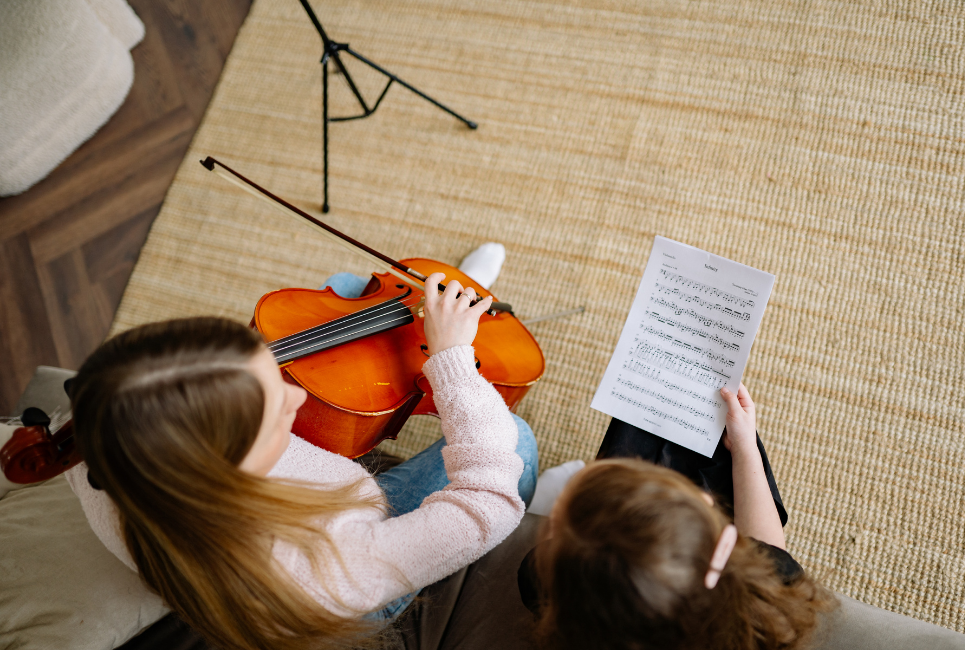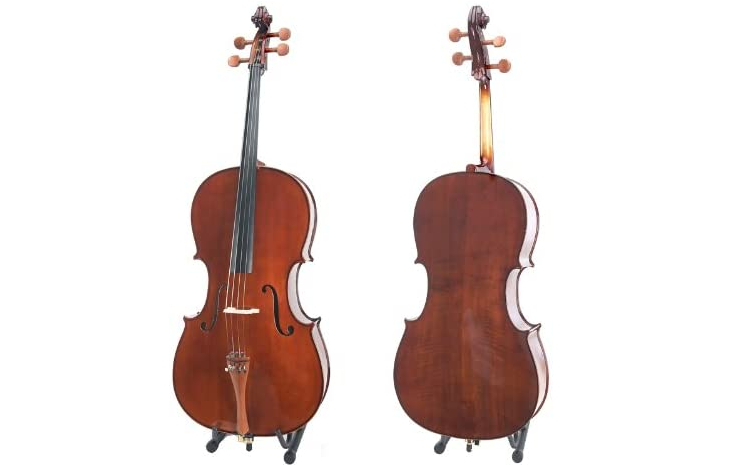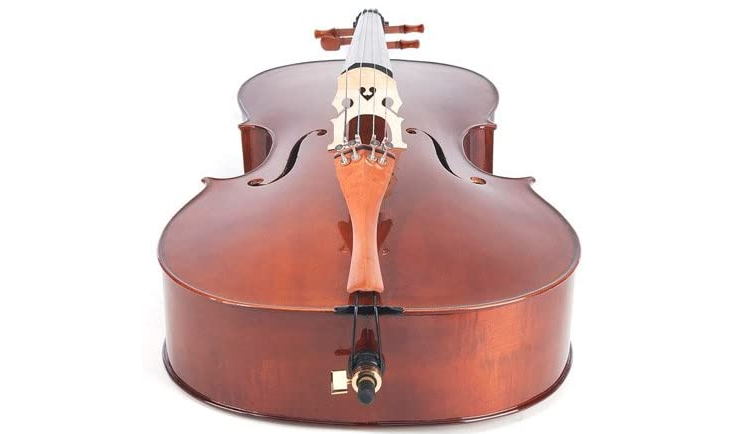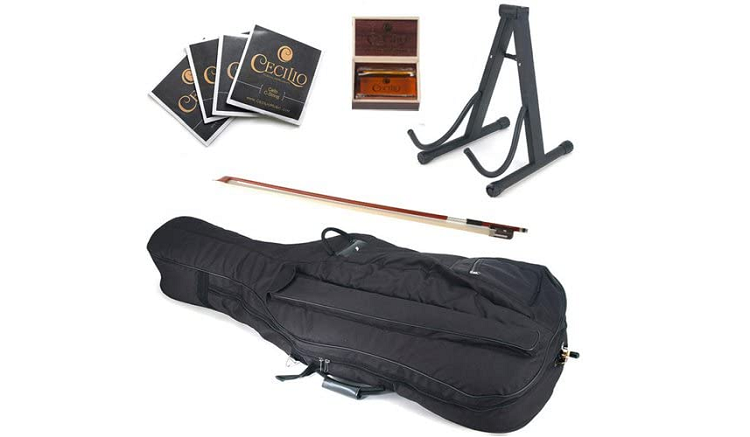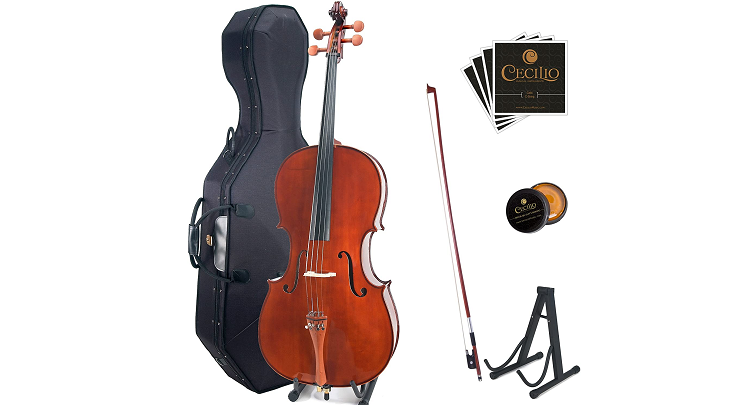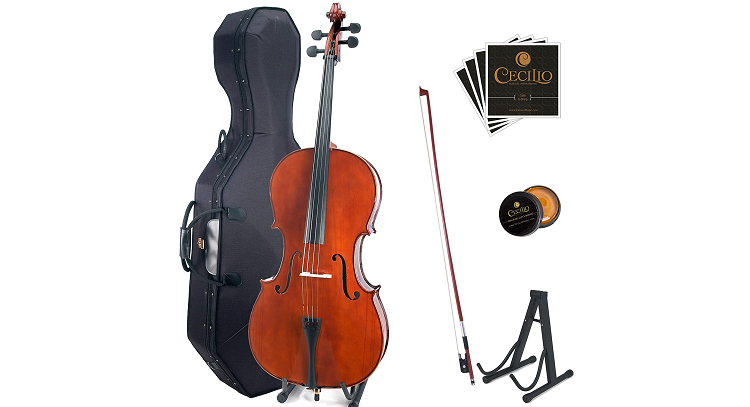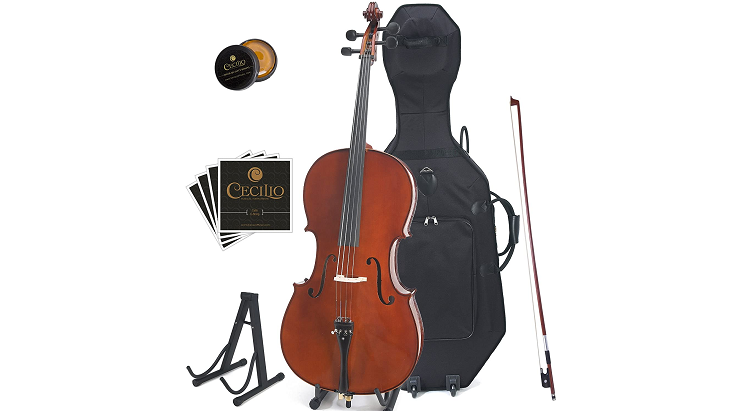- Cecilio CCO 300 Review and Guide - February 21, 2022
- Mendini mv500 Review: The Best Mendini Budget Violin - December 14, 2021
- Cecilio CVN 300 Review and Guide - December 9, 2021
Buying a student Cello for you or your child can be challenging. What brand, size, price are common questions that need proper answers. This Cecilio CCO 300 aims to answer these questions by analyzing what I believe is one of the best instruments for beginner Cellists.
My bottom line up-front: The Cecilio CCO 300 is one of the best budget Cellos that keep its promise of great playability and a balanced tone. It’s well designed and built using the right tonewoods that make it sound good and allow it to be affordable.
The extra accessories included in the handy hard case and the 1-year warranty are different reasons why I recommend this instrument. I find it a good fit for anyone who needs a first cello or replaces their cheap student one.
Cecilio CCO 300 Specs
- 4/4 (full size), 3/4, 1/2, 1/4 hand-carved Solid Spruce top, Maple neck, fingerboard, back, and sides
- HIgh-luster varnish finish with inlaid purflings.
- It comes with both a Lightweight form-fitting hard case & carrying bag with accessories pockets and adjustable backpack straps.
- Boxwood pegs & Tailpiece Boxwood tailpiece with four nickel-plated removable fine tuners
- Brazilwood bow with an unbleached genuine Mongolian horsehair
Cecilio CCO 330 Pros
- The Tonewoods are good and produce and deep, somewhat rich tone.
- Like all Cecilio student instruments, it comes with many handy accessories
- You don’t need to set up anything on the Cello other than placing the bridge and strings.
- It’s a solid build that will last for at least your first beginner years and even first intermediate ones
- 1-year defect in material and construction warranty
Cecilio CCO 330 Cons
- The bow that comes with the Cello is not high quality
- It would be best if you considered replacing the strings
- The tuning pages are not of great quality
How to Choose a Good Cello for a Beginner?
Choosing a cello for a beginner comes down to finding a model that blends playability at a reasonable price. The best Cello is not always the most expensive one.
The most important quality to look for is playability. The Cello should make learning easy for a new starter working on basic techniques.
In most cases, the player won’t even tell if it’s the Cello’s fault or theirs if the instrument isn’t sounding right. That’s why a well-designed bridge, neck angle, positions of the soundpost are far more important than the finish and tone.
Tuning stability is the second most important feature that stands out. When the strings are new, the Cello could go out of tune until they stretch. If the Cello is continuously going out of tune, sometimes even while playing it, then there is probably something wrong in the build, and you to either fix or replace some parts.
Even when used heavily, a quality Cello should rarely go out of tune. There is not much point in having a great tone if what you play doesn’t sound right.
The third most important aspect is sturdiness. A big instrument like the Cello might get damaged easily if the quality is poor. Minor scratches or flaws in the finish are not a problem. Neck cracks, however, signal that you need a luthier to fix the instrument. Depending on the repair cost, buying a new cello in good shape might be more convenient.
The last aspect of an entry-level cello you should consider is the tone. Even if it’s not particularly deep and rich, a new player will need months or years of practice to bring the best tone out of its instrument. If you can afford a good-sounding cello, consider it an investment for years to come. If you cannot, then any well-built ones will do.
Cecilio CCO 300 Built Quality
Cecilio is well known for producing quality, affordable cellos, and the Cecilio CCO 300 is a perfect example of that.
The looks on the instrument are the first thing that stands out. The finish is very well done and flashy enough to make the Cello look classy and not plastic like many budget ones.
The carvings and purfling are the same as the finish, not flawed even in close inspection. You could easily mistake the CC0 300 for a much more expensive cello. Being entirely made out of Maple and not Ebony, like most Cellos, gives it a brighter unique look.
The bridge is not from an especially known builder, but it’s still well designed, carved, sanded. It’s enough to assemble it properly in a few easy steps, and the Cello will be 100% playable. All other hardware share the feature of not being anything fancy but getting the job done right.
Tuning pegs are made out of cheap boxwood, but that doesn’t impact tunning stability.
To make tunning even more stable, you might consider changing the boxwood tuners to ebony ones. Other minimal issues with the fine tuners are common in instruments of this price; however, these issues are very easy to fix, and you will still end up saving hundreds of dollars.
Even though the CCO 300 is all built-in China, the quality control of Cecilio is good enough to assure you will have no flaws in the built and an overall quality instrument for the price. Any minor flaw, however, is easily fixed with a set-up.
Cecilio CCO 300 Tone
Tonewoods are the main ingredient that contributes to the tone of a Cello. Good tonewoods treated properly and carved the right way make for a rich-sounding Instrument.
Upfront, I can say this Cello sounds good. I was not expecting any tone for this price and was surprised at first listen. This Cello is mostly made out of Maple, a bright-sounding tonewood. The solid spruce top Is typical even in more expensive cellos and has the quality of projecting the sound from the instrument to the listener.
Cheap Woods from America and China often sound very bright and lack the depth of expensive European ones. The tonewoods on the Cecilton CCO 300 are not costly; however, they don’t sound overly bright.
Even when used as upright bass, the tone is still solid. It doesn’t have the same kind of warmth and presence as an upright bass or expensive Cello, but it’s still a perfect fit for a beginner or advanced beginner.
If you’re wondering how this instrument is so cheap while having a good tone, the answer lies in the Tonewood choices. Having the entire instrument carved out of Maple drastically lowers the cost for Cecilio.
The solid spruce top is a surprising addition to the instrument. In budget instruments, the top is usually laminated. A solid top is made out of an entire piece of wood, while a laminated one blends synthetic materials. The only other tonewood is boxwood which is still much cheaper than Ebony.
If the Cecilio CCO 300 sounded any less than it does, I would have solely recommended it for beginners. However, It’s a good enough instrument to keep for years, and the sound is good enough for the Intermediate player.
What Comes with the Box?
All the accessories that come with the Cello are helpful; however, some are good, and others might need replacing.
- The bow will do its job, but I don’t think it’s a very good one both for tone and playability. You might consider replacing it after some months of playing.
- The hard case and soft one aren’t especially good, but they are necessary. Having both included in the price is beyond convenient. The same goes for the Stand.
- The Cecilio strings are not cheap; there are, however, better ones to get the full tone out of the Cello.
- The rosin cake will for sure come in handy.
Even if nothing was included apart from the hard case, I would still think the price is perfectly reasonable!
Cecilio CCO 300 Alternatives
To better understand where the CCO 300 stands in terms of quality and price, comparing it with some similar models might help.
Cecilio CCO 300 vs Cecilio CCO 200
One step down the CCO line for a lower price, you can purchase the CCO 200. This Cello shares a lot with the 300 and compromises very little regarding quality.
The CCO 200 is all made out of Maple, making it cheaper than blending other tonewoods as the 300 does. It also features a metal tailpiece instead of the Boxwood ones. In terms of playability and looks, both Cellos are very similar. I’d still give the upper hand to the 300 though as the tone is just slightly richer.
If you don’t want to spend the extra dollars for the CCO 300, this Cello is still a great choice for beginners and will serve them just right.
Cecilio CCO 300 vs Cecilio CCO 500
The Cecilio CCO 500 is a step up to the 300 with better quality Tonewoods that are fit for Intermediate players.
Similar to the 300, this Cello uses Maple; the only difference is that the CCO 500 uses a flamed maple for the back, sides, and neck. The Fingerboard and Tuning Pegs are all out of Ebony, a more expensive, deeper-sounding tonewoods.
The top is solid spruce; the finish and design are very similar to the 300. The better tonewoods make for a rounded and purer tone than the 300.
Being more expensive than the CCO 100 and 200, I recommend the CCO 500 for players who already have a certain instrument mastery and need a better-sounding one. You read out the full guide on this Cello here.
FAQs
Answer: Besides the size of the instrument, which depends on the child’s age and body size, the Tonewoods and craftsmanship are the main differences. Student cellos generally use “wet wood,” meaning not aged, less expensive tonewoods, and the tone is not as impressive as a regular one.
Answer: The common agreement is that a Cello bow lasts about six months for most players. The time depends a lot on how much you play daily and the quality of the bow. Every player will eventually feel the need to replace the bow as the Cello sounds more mellow and the playing is not as smooth.
Answer: If a full-size one is too big and the ¾ fell small, the only option left is the ⅞ cello size. It’s not a very common size for children and is usually used by adults with smaller hands.
Even if your arm is the right length for a full-size Cello, your fingers might be too short. ⅞ Instruments generally don’t sound as good as their full-size counterparts. However, if it’s a quality Cello, it will sound better than any full-sized cheap one.
Final Thoughts on the Cecilio CCO 300
As a professional musician, I am usually biased regarding budget instruments. For the CCO 300, I can’t find any reason why not to buy it if you’re a beginner. Compared to most others of this price range, it’s superior and flawlessly responds to a new Cellist’s needs.
However, be prepared to invest some money for better accessories and perhaps change the tuning pegs and fine tuners.
Looking for more interesting readings? Check out:

